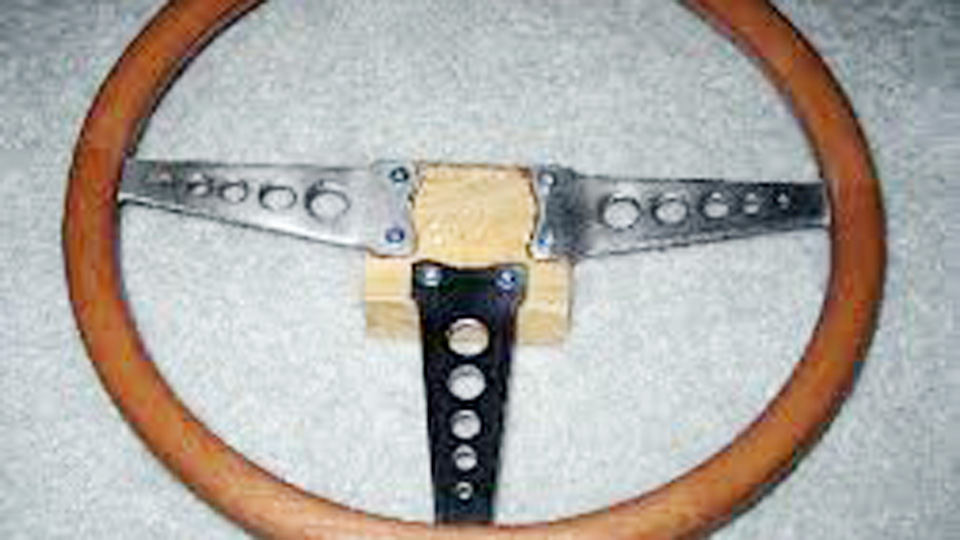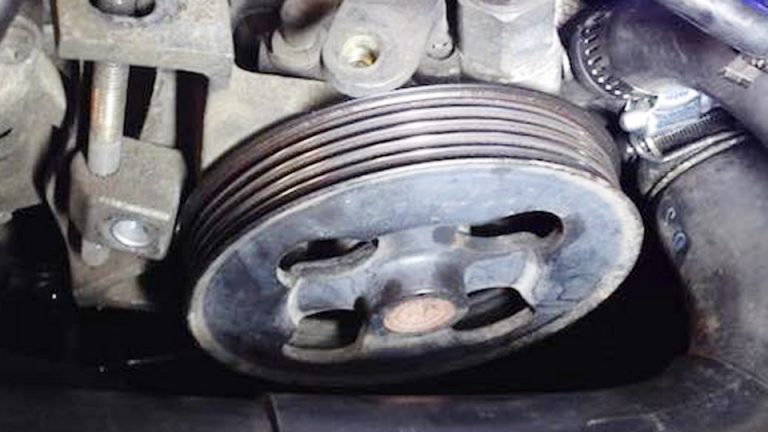Installing a wood grain steering wheel is one of those upgrades that not only changes the look of your car’s interior but also gives you that classic, custom feel every car enthusiast loves. The process isn’t overly complicated, but it does require patience, the right tools, and a little bit of know-how. Whenever customers ask me “How to Install a Wood Grain Steering Wheel?”, I always remind them that it’s not just about bolting on a new wheel—you need to think about the hub adapter, proper alignment, and most importantly, safety features like the airbag and horn connection.
I’ve installed plenty of aftermarket steering wheels in my garage, and the biggest mistake I see people make is skipping the prep work—like disconnecting the battery or forgetting to mark the wheel’s center position before removal. I’ll walk you step by step through removing your old wheel, setting up the adapter, and fitting the new wood grain wheel so it not only looks sharp but also feels solid and safe when you hit the road. This is one of those projects that, when done right, gives you instant pride every time you sit behind the wheel.

Image by ahexp
Why Choose a Wood Grain Steering Wheel?
What Is a Wood Grain Steering Wheel?
A wood grain steering wheel combines a classic wooden or wood-like rim with a durable metal or composite core, often paired with leather or vinyl accents. It’s a nod to vintage cars but designed for modern vehicles, offering a luxurious feel and a unique aesthetic. Available for brands like Ford, Chevy, Toyota, and even high-end models like BMW or Cadillac, these wheels come in various finishes—polished walnut, oak, or synthetic wood grain for budget-conscious drivers.
Why It Matters for Your Driving Experience
The steering wheel is your primary connection to the car. A wood grain wheel enhances grip and comfort, especially on long drives, and can reduce hand fatigue compared to slick plastic wheels. Aesthetically, it elevates your interior, making an old Chevy Silverado or a daily-driver Honda Accord feel like a custom ride. Plus, a quality wheel can improve resale value for classic car enthusiasts.
Common Problems with Stock Steering Wheels
Stock steering wheels, especially in older vehicles, wear out. The rubber or plastic cracks, peels, or gets slippery from years of sweat and grime. I once worked on a 2005 Ford Mustang where the owner’s hands were black after every drive because the wheel’s coating was disintegrating. Thin, cheap wheels also lack the tactile feedback you get from a thicker, premium wood grain model.
When to Replace Your Steering Wheel
Replace your steering wheel if it’s cracked, faded, or slippery, or if you’re restoring a classic car and want that vintage vibe. Upgrading to wood grain is also a smart move if you’re customizing your ride for shows or just want a more comfortable grip. If your airbag light is on, though, address that first—steering wheel replacements can complicate airbag systems.
OEM vs Aftermarket Wood Grain Steering Wheels
OEM Wood Grain Steering Wheels
Original Equipment Manufacturer (OEM) wheels come from your car’s maker—think Ford, GM, or Toyota. They’re designed to fit your vehicle perfectly, with no guesswork about compatibility. For example, a GM wood grain wheel for a 2010 Cadillac Escalade will match the factory specs, including airbag integration.
Pros:
- Guaranteed fit and compatibility.
- High-quality materials, often real wood like walnut.
- Retains factory airbag and controls.
- Maintains resale value for purists.
Cons:
- Expensive, often $300–$800.
- Limited style options.
- May require dealer installation for warranty.
Aftermarket Wood Grain Steering Wheels
Aftermarket brands like Grant, MOMO, or NRG offer more variety in design and price, from $100 to $500. You can find synthetic wood grain for budget builds or polished hardwood for premium projects. I installed a Grant wood grain wheel on a 1998 Jeep Wrangler last summer, and the owner loved the retro vibe it added.
Pros:
- Affordable options for most budgets.
- Wide range of styles and finishes.
- Easier to find for older or niche vehicles.
Cons:
- Fitment may require adapters or hubs.
- Quality varies—some brands use cheap materials.
- Airbag integration can be tricky or nonexistent.
Comparison Table: OEM vs. Aftermarket Wood Grain Steering Wheels
| Feature | OEM | Aftermarket |
|---|---|---|
| Price | $300–$800 | $100–$500 |
| Fitment | Perfect for specific models | May need adapters |
| Material Quality | High (real wood, leather) | Varies (synthetic to hardwood) |
| Airbag Compatibility | Full integration | Limited or none |
| Style Options | Limited | Extensive |
| Availability | Dealer or specialty shops | Online, auto parts stores |
Top Brands in the USA
- OEM: Ford, GM, Toyota, Honda (check dealer or CarID.com).
- Aftermarket: Grant (classic designs), MOMO (sporty), NRG (custom builds).
- Budget Picks: Pilot Automotive, Forever Sharp (synthetic wood grain).
How to Choose the Right Wood Grain Steering Wheel
Check Vehicle Compatibility
Before buying, confirm the wheel fits your car’s make, model, and year. For example, a 2015 Chevy Silverado needs a different hub than a 1995 model. Check the spline count on your steering column (usually 36 or 48 splines) and whether your car has cruise control or airbag systems. I once had a customer buy a gorgeous walnut wheel for his Dodge Ram, only to realize it didn’t fit his 2003 model’s airbag setup.
Real Wood vs. Synthetic
Real wood (like walnut or mahogany) feels premium but requires maintenance to prevent cracking in extreme heat or cold. Synthetic wood grain is durable and cheaper but can look plasticky up close. For daily drivers in hot states like Arizona, I lean toward synthetic for longevity.
Airbag and Control Considerations
If your car has an airbag, stick with an OEM wheel or an aftermarket model explicitly designed for airbag retention. Aftermarket wheels often require a separate airbag delete kit, which isn’t street-legal in some states. Also, ensure the wheel supports your car’s controls (e.g., volume, cruise control).
Spotting Fake or Low-Quality Wheels
Counterfeit wheels flood online marketplaces. Look for:
- Brand Markings: Genuine Grant or MOMO wheels have clear logos and serial numbers.
- Weight: Cheap wheels feel light and flimsy.
- Reviews: Check forums like Reddit’s r/cars or sites like Summit Racing for user feedback.
- Packaging: OEM wheels come in branded boxes, not generic plastic.
I once saw a “bargain” wood grain wheel on eBay that cracked during installation—turns out it was a knockoff with no structural integrity. Stick to reputable retailers like AutoZone, Advance Auto Parts, or Summit Racing.
Step-by-Step Guide: How to Install a Wood Grain Steering Wheel
Installing a wood grain steering wheel takes about 1–2 hours with the right tools and patience. Here’s how I do it in the shop, broken down for DIYers.
Tools You’ll Need
- Socket wrench (usually 21mm for the steering wheel nut).
- Torx or Phillips screwdriver (for airbag or trim removal).
- Steering wheel puller (rent from AutoZone for $10–$15).
- Torque wrench (for precise tightening).
- Flathead screwdriver (for prying trim).
- Allen keys (for some aftermarket hubs).
- Gloves and safety glasses (airbags can pop unexpectedly).
Safety First
Disconnect the battery (negative terminal) and wait 10 minutes to discharge the airbag system. I learned this the hard way when an airbag deployed in my face during a 2008 Honda Civic job—loud, scary, and expensive.
Step 1: Remove the Old Steering Wheel
- Remove Airbag or Horn Cover: Use a screwdriver to pop off the horn cover or remove Torx screws holding the airbag. Gently disconnect airbag wiring (yellow connectors).
- Mark Alignment: Use a marker to note the steering wheel’s position relative to the column for straight reassembly.
- Remove the Center Nut: Use a socket wrench to loosen the 21mm nut (or size specific to your car).
- Use a Steering Wheel Puller: Attach the puller to the wheel’s hub and turn the bolt to pop the wheel off. Don’t yank—force can damage the column.
Step 2: Install the Adapter Hub (If Needed)
For aftermarket wheels, install the hub adapter specific to your vehicle. For example, Grant hubs for a 1999 Ford F-150 have a different spline pattern than a 2010 model. Torque the hub to the manufacturer’s specs (usually 30–40 ft-lbs).
Step 3: Attach the Wood Grain Steering Wheel
- Connect Wiring: If your wheel has controls or an airbag, reconnect the wiring harness carefully.
- Align the Wheel: Match the wheel’s splines to the hub, using your alignment marks.
- Secure the Wheel: Tighten the center nut to the recommended torque (check your car’s manual, typically 25–35 ft-lbs).
- Reattach Trim or Airbag: Snap the horn cover or airbag module back into place.
Step 4: Test and Reconnect
Reconnect the battery, turn on the ignition, and check for airbag or warning lights. Test horn and controls. Take a short drive to ensure the wheel is straight and responsive.
Common Installation Mistakes
- Forgetting to Disconnect the Battery: Risks airbag deployment.
- Misaligning the Wheel: Causes off-center steering. I’ve had to redo jobs because I skipped the alignment mark step.
- Over-Tightening: Can strip the steering column threads.
- Ignoring Airbag Wiring: Loose connections trigger warning lights.
Maintenance Tips for Your Wood Grain Steering Wheel
Cleaning and Care
- Real Wood: Use a damp cloth with mild soap, then dry immediately. Apply wood conditioner (like Howard Feed-N-Wax) every 6 months to prevent cracking.
- Synthetic Wood: Wipe with a microfiber cloth and all-purpose cleaner. Avoid harsh chemicals that dull the finish.
- Leather Accents: Use leather cleaner and conditioner to keep it supple.
Protecting from Wear
- Park in the shade or use a windshield sunshade in hot climates like Texas or California—UV rays fade wood grain fast.
- Wear gloves during long drives to reduce oil and sweat buildup.
- Check bolts annually for looseness, especially on aftermarket wheels.
When to Replace
A quality wood grain wheel lasts 5–10 years with care. Replace it if the wood cracks, the finish peels, or the grip feels loose. I once saw a customer’s aftermarket wheel wobble because the hub bolts loosened over time—regular checks prevent this.
Personal Anecdotes from the Garage
Last year, I helped a buddy install a walnut Grant wheel on his 1970 Chevy Camaro for a car show. The stock wheel was a cracked mess, and the wood grain transformed the interior. But we hit a snag—the hub adapter was wrong for his column. A quick trip to Summit Racing saved the day, but it taught me to triple-check compatibility. Another time, a customer brought in a 2012 Toyota Tacoma with a fake eBay wheel. The “wood” was plastic that chipped during installation. Always buy from trusted sources!
Conclusion: Make Your Steering Wheel Upgrade a Success
Installing a wood grain steering wheel is a game-changer for your car’s look and feel. Whether you choose an OEM wheel for perfect fit or an aftermarket one for style and savings, the key is preparation: check compatibility, buy from reputable brands, and follow the installation steps carefully. You’ll save money doing it yourself, avoid costly mistakes, and enjoy a better driving experience. My final pro tip? Keep a torque wrench handy—it’s your best friend for ensuring a secure, wobble-free install.
Common Questions About Wood Grain Steering Wheels
How Much Does a Wood Grain Steering Wheel Cost?
Prices range from $100 for budget aftermarket wheels (Pilot, Forever Sharp) to $800 for OEM wheels from brands like Ford or Cadillac. Add $50–$100 for hub adapters if needed.
Can I Install a Wood Grain Steering Wheel on Any Car?
Most cars can accept a wood grain wheel, but you’ll need a vehicle-specific hub adapter for aftermarket wheels. Check spline count and airbag compatibility before buying.
Is It Legal to Replace a Steering Wheel with an Airbag?
In the USA, replacing an airbag-equipped wheel with a non-airbag one is often illegal for street use. Stick to OEM or airbag-compatible aftermarket wheels to stay compliant.
How Do I Know If a Wood Grain Steering Wheel Is Genuine?
Look for brand logos, serial numbers, and quality packaging. Buy from trusted retailers like AutoZone or Summit Racing, and check reviews on forums like Reddit’s r/cars.
How Long Does It Take to Install a Wood Grain Steering Wheel?
With the right tools, it takes 1–2 hours. Disconnecting the battery and using a steering wheel puller are musts to avoid damage or airbag issues.



